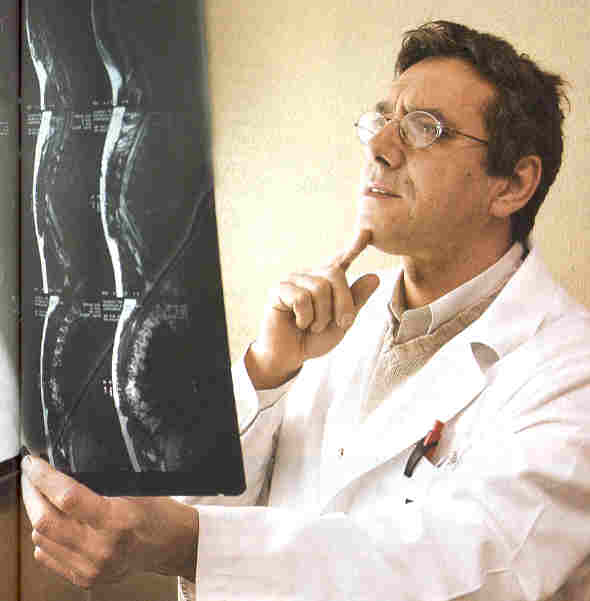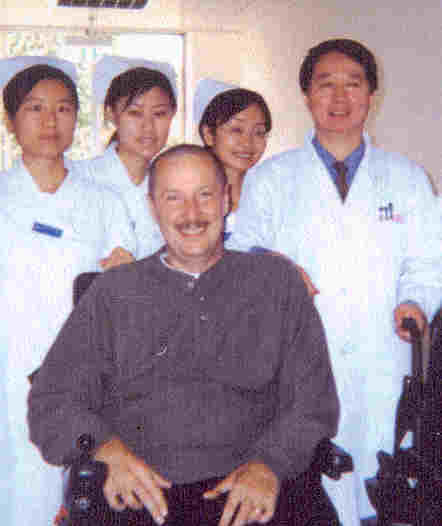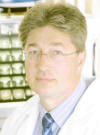
When I directed PVA’s Spinal Cord Research Foundation
a decade ago, function-restoring interventions for spinal cord injury
(SCI) were rare and usually off the radar screen in this pre-Internet era.
In contrast, today, so many promising surgeries are in the developmental
pipeline, it is difficult to keep track of them; at this ever-accelerating
rate, the next decade’s progress is anticipated with great excitement.
This article’s purpose is to provide brief synopses of some of these
surgeries involving the transplantation of various stem or olfactory
cells.
Improvements accruing from these surgeries can vary
from the negligible to dramatic. Furthermore, results often depend upon
the patient’s commitment to aggressive, post-surgical physical
rehabilitation designed to maximize restored function, which scientific
purists consider a confounding factor. Although impressive success stories
receive great visibility, the disappointments do not.
OLFACTORY & STEM CELLS
Because olfactory
tissue is exposed to the air we breathe, it contains cells with
considerable turnover potential, including renewable neurons, progenitor
stem cells, and olfactory ensheathing cells (OECs).
When transplanted into the injured spinal cord, OECs
promote axonal regeneration by producing insulating myelin sheaths around
both growing and damaged axons, secreting growth factors, and generating
structural and matrix macromolecules that lay the tracks for axonal
elongation.
Stem cells can differentiate into cells that
can potentially treat many neurological disorders. Although a complex
subject that cannot be adequately discussed in this article,
transplantable stem cells are often categorized as either embryonic,
a contentious issue in this country, or adult (non-controversial).
As the name implies, the former are derived from
embryonic tissue and possess the greatest potential to differentiate into
a wide range of cell types, although it has proven difficult to direct
their differentiation pathway.
Adult stem cells are found in numerous tissues,
including bone marrow (which produces, for example, hematopoietic stem
cells that give rise to blood cells), and nervous tissue (whose stem cells
can evolve into neurons and neuronal support cells). Although adult stem
cells usually differentiate into the specialized cells associated with the
originating tissue, when certain cues are provided, they can differentiate
into cells associated with other tissue. For example, under appropriate
circumstances, bone-marrow-derived stem cells have the potential to become
nerve cells.
Transplantable cells can be obtained from the patient
(autologous), different individuals or embryos (allogeneic), or different
species (xenogeneic). All three types have been transplanted into the
injured spinal cord. Because autologous tissue is from the patient, there
is no immunological rejection. Embryonic cells’ undifferentiated nature
also minimizes, to some degree, rejection.
In addition to different cells being transplanted,
there are differences in how they are re-introduced into the patient. All
of the procedural differences help explain why some methods appear so
promising and others less so.
SURGICAL PROCEDURES:
Portugal: Dr.
Carlos Lima implants whole olfactory tissue obtained from the patient
(i.e., no immunological rejection) back into the injury site.
 Lima
believes that more than one cell type is needed to maximize regeneration,
including not only OECs but also olfactory neurons in different
developmental stages, and precursor stem cells. To date, he has treated
over 40 patients, most of whom have accrued benefit. An adult stem-cell
advocate, Lima believes “Mother Nature made embryonic stem cells to
proliferate and adult stem cells to replace and repair.”
Lima
believes that more than one cell type is needed to maximize regeneration,
including not only OECs but also olfactory neurons in different
developmental stages, and precursor stem cells. To date, he has treated
over 40 patients, most of whom have accrued benefit. An adult stem-cell
advocate, Lima believes “Mother Nature made embryonic stem cells to
proliferate and adult stem cells to replace and repair.”
China:
In contrast, Dr. Hongyun Huang
transplants OECs isolated from fetal olfactory bulbs. The isolated OECs
are grown and expanded in culture, and then about a million are injected
around the injury site exposed through a limited laminectomy. Huang has
transplanted OECs into hundreds of patients, often many years after
injury, and there is a long waiting list for his procedures. Because ma ny
patients regain some function soon after surgery, improvement is not due
to relatively slow neuronal regeneration or remyelination. Huang
speculates that OECs wakeup quiescent neurons that still transverse the
injury site, perhaps by altering the injury site’s environment through
secreting growth factors and producing adhesion and matrix molecules.
ny
patients regain some function soon after surgery, improvement is not due
to relatively slow neuronal regeneration or remyelination. Huang
speculates that OECs wakeup quiescent neurons that still transverse the
injury site, perhaps by altering the injury site’s environment through
secreting growth factors and producing adhesion and matrix molecules.
Australia: In a phase-1 clinical trial, Dr.
Alan MacKay-Sim’s team has implanted autologous OECs back into the
patient’s injured cord. The OECs were isolated from the patient’s nasal
tissue and amplified in culture to yield up to 20-million cells over six
weeks. These cells were injected into 40 sites surrounding the injury
site. The progress of three subjects who received OEC transplants is being
compared to three individuals who did not have the transplants. These
comparative assessments are blinded, i.e., progress-monitoring assessors
do not know which patients had the procedure.
Brazil: Dr. Tarcisio Barros et al. have
infused bone-marrow-derived stem cells into the spinal artery closest to
the injury site in 32 subjects with clinically complete injuries (2-12
years post injury). The stems cells were isolated from the patient’s own
blood after treatment with a drug that stimulates the bone-marrow
production of these cells and, in turn, their spillover into the blood.
After one-year follow-up, 18 patients have shown improvement in
electrophysiological neuronal conduction, which, in some cases, has been
translated into functional improvement.
Russia (Moscow): Dr. Andrey Bryukhovetskiy has
transplanted embryonic and autologous (i.e., from the patient) adult stem
cells into patients with chronic SCI. From extensive experience using both
cell types, Bryukhovetskiy has concluded that autologous stem cells are
much more effective than the embryonic stem cells in restoring function.
With his most recent work, either olfactory or hematopoietic-derived,
autologous stem cells are implanted within a gel-polymer matrix for
patients who need reconstructive surgeries. In patients who did not need such surgeries, hematopoietic stem cells are
transfused intrathecally into the spinal fluid. Although results are
preliminary, some of Bryukhovetskiy’s patients (average 5-years post
injury) have had dramatic functional improvements in relatively short time
periods, many improving two grades using the commonly used ASIA
classification scale.
In patients who did not need such surgeries, hematopoietic stem cells are
transfused intrathecally into the spinal fluid. Although results are
preliminary, some of Bryukhovetskiy’s patients (average 5-years post
injury) have had dramatic functional improvements in relatively short time
periods, many improving two grades using the commonly used ASIA
classification scale.
Russia (Novosibirsk): Dr. Samuil Rabinovich’s
team has transplanted various combinations of fetal OECs, cells from
nervous and hematopoietic tissues, and spinal cord fragments into the
injury site of 15 patients. Ranging in age from 18 to 52, patients were
one-month to six years post injury and had complete, Frankel grade-A
injuries (Frankel classification evolved into today’s ASIA scale). Each
patient received one to four cell transplantations at various times, and
was followed at least 1.5 years. Improvements were noted in 11 of 15
patients. Six improved to grade-C, incomplete level, and five were able to
walk with crutches. In general, patients who had the transplantations
sooner after injury accrued the most benefit.
South Korea: Dr. Song Chang-Hoon et al.
injected stems cells isolated from umbilical cord blood into a 37-year old
woman’s injury site. Injured for 19 years, she regained significant
function relatively soon after surgery, including some walker-assisted
ambulation. Chang-Hoon believes that injecting the cells directly into the
spinal cord is more effective than infusing them into spinal fluid
surrounding the cord. Unlike embryonic stem-cells, umbilical stem-cells
are not controversial. They also have less rejection potential than most
other donor tissue except embryonic tissue; i.e., some, but not strict,
matching between donor and recipient is needed.
Czech Republic: Dr. Eva Sykova and colleagues
have harvested autologous, bone-marrow stem cells from the iliac bone
(i.e., hip) of 17 patients. Within five hours of harvesting, cells were
re-introduced into the patient through the vertebral artery (7 cases),
intravenously (10 cases), or underneath the cord’s dura membrane (1 case).
Eight and nine patients were treated 11-30 days and 2-17½ months after
injury, respectively; one patient was treated twice. Four had improved
ASIA scores, seven had enhanced neuronal conduction, and the lesions of
three were reduced in size as measured by MRI. In general, more benefits
accrued when the treatment was done closer to the time of injury. Sykova
is now experimenting with stem cells incorporated within a gel matrix, and
treating patients with bone-marrow-derived stem cells that have spilled
over into blood after drug stimulation.
Mexico: Starting in the early 1990’s
Dr. Fernando Ramirez’
team has transplanted blue-shark, embryonic neuronal cells (i.e.,
xenogeneic transplantation) into the injured spinal cord of 89 patients
with SCI. His approach evolved from live-cell therapies developed by
European scientists starting in the 1930s long before stem cells emerged
as a hot scientific topic.
CONCLUSION
For a variety of scientific, regulatory, and societal
reasons, most SCI surgical breakthroughs are happening elsewhere in the
world. Although our conservative approach to developing new treatments
ensures safety and efficacy using scientifically pure methodology, it
hinders the development of real-world treatments. There is always a
tradeoff between the risk of new therapies and the risk of not having any
therapies at all. In contrast, for many foreign scientists, there are
fewer hurdles to overcome to move beyond animal research to human
interventions. To help benefit Americans with SCI, we need to
open-mindedly form bridge-building collaborations throughout the world.
Adapted from article appearing in April 2005 Paraplegia News (For subscriptions,
call 602-224-0500) or go to www.pn-magazine.com).
TOP